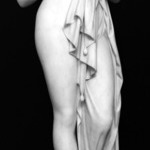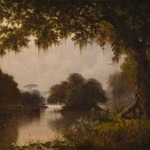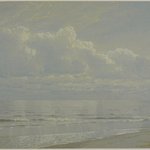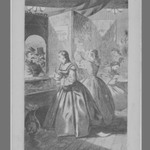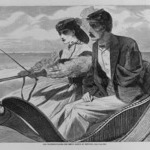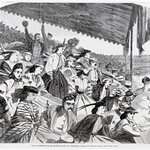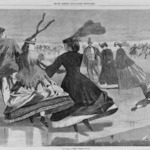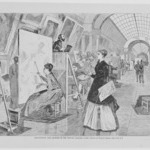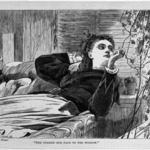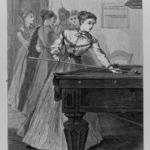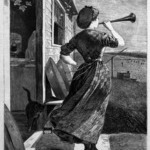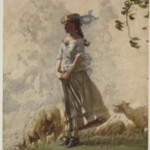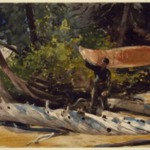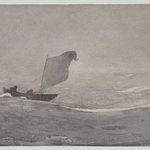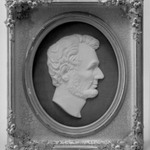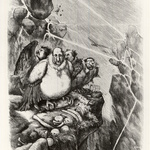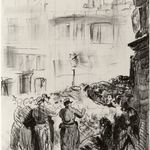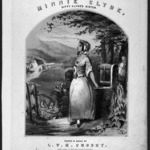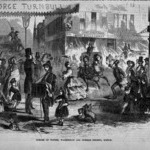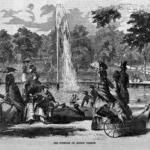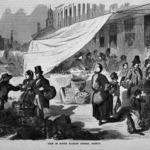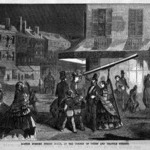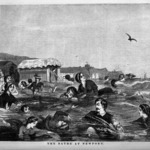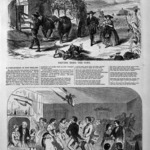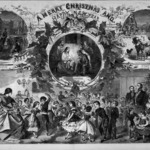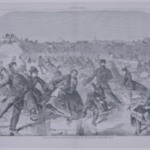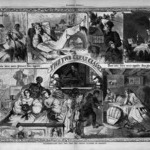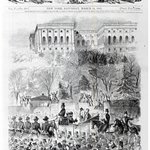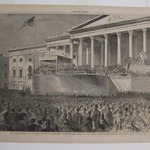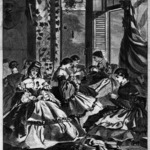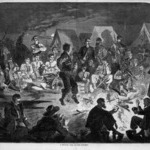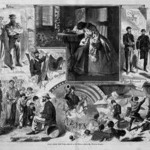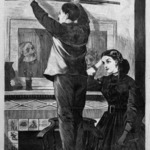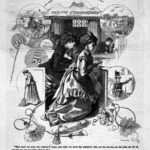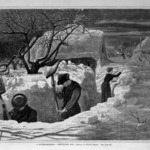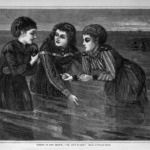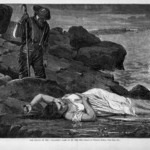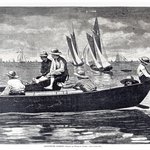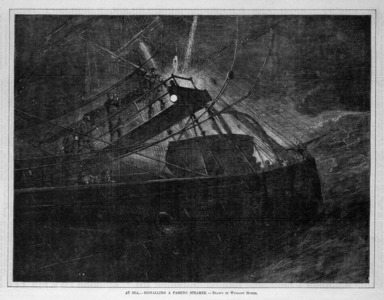
At Sea,--Signaling a Passing Steamer
Winslow Homer
American Art
International travel became relatively commonplace in the years after the Civil War when passenger steamships carried American tourists and artists back and forth across the Atlantic. These vessels also delivered thousands of European immigrants to the port cities of the United States. Here Homer recorded the midocean passing of two steamers, described in the text:
Passing a ship at sea is always an exciting incident; the strange vessel, which you have never seen before, and will probably never see again, seems like an old friend to you. You watch its approach with welcoming eyes and regard it half sadly as it sweeps by and fades in the distance.
Passing a ship at sea is always an exciting incident; the strange vessel, which you have never seen before, and will probably never see again, seems like an old friend to you. You watch its approach with welcoming eyes and regard it half sadly as it sweeps by and fades in the distance.
MEDIUM
Wood engraving
DATES
1871
DIMENSIONS
Image: 9 1/4 x 12 1/8 in. (23.5 x 30.8 cm)
Sheet: 11 1/8 x 14 5/8 in. (28.3 x 37.1 cm)
Frame: 16 3/4 x 22 3/4 x 1 1/2 in. (42.5 x 57.8 x 3.8 cm) (show scale)



COLLECTIONS
American Art
ACCESSION NUMBER
1998.105.169
CREDIT LINE
Gift of Harvey Isbitts
EXHIBITIONS
MUSEUM LOCATION
This item is not on view
CAPTION
Winslow Homer (American, 1836–1910). At Sea,--Signaling a Passing Steamer, 1871. Wood engraving, Image: 9 1/4 x 12 1/8 in. (23.5 x 30.8 cm). Brooklyn Museum, Gift of Harvey Isbitts, 1998.105.169 (Photo: Brooklyn Museum, 1998.105.169_bw.jpg)
IMAGE
overall, 1998.105.169_bw.jpg. Brooklyn Museum photograph
"CUR" at the beginning of an image file name means that the image was created by a curatorial staff member. These study images may be digital point-and-shoot photographs, when we don\'t yet have high-quality studio photography, or they may be scans of older negatives, slides, or photographic prints, providing historical documentation of the object.
RIGHTS STATEMENT
No known copyright restrictions
This work may be in the public domain in the United States. Works created by United States and non-United States nationals published prior to 1923 are in the public domain, subject to the terms of any applicable treaty or agreement.
You may download and use Brooklyn Museum images of this work. Please include caption information from this page and credit the Brooklyn Museum. If you need a high resolution file, please fill out our online application form (charges apply).
The Museum does not warrant that the use of this work will not infringe on the rights of third parties, such as artists or artists' heirs holding the rights to the work. It is your responsibility to determine and satisfy copyright or other use restrictions before copying, transmitting, or making other use of protected items beyond that allowed by "fair use," as such term is understood under the United States Copyright Act.
The Brooklyn Museum makes no representations or warranties with respect to the application or terms of any international agreement governing copyright protection in the United States for works created by foreign nationals.
For further information about copyright, we recommend resources at the United States Library of Congress, Cornell University, Copyright and Cultural Institutions: Guidelines for U.S. Libraries, Archives, and Museums, and Copyright Watch.
For more information about the Museum's rights project, including how rights types are assigned, please see our blog posts on copyright.
If you have any information regarding this work and rights to it, please contact copyright@brooklynmuseum.org.
RECORD COMPLETENESS
Not every record you will find here is complete. More information is available for some works than for others, and some entries have been updated more recently. Records are frequently reviewed and revised, and we welcome any additional information you might have.
